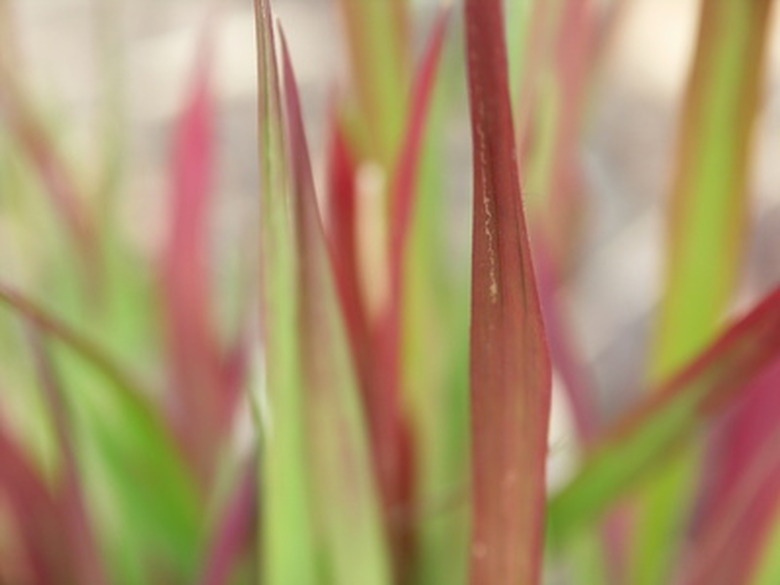Types Of Grass In Japan
Japanese grasses can add a different visual element to your landscapes. Depending on the grass, Japanese ornamental grasses can range in height from around 1 foot to nearly 7 feet in height. You can plant your grasses together in a pattern with taller grasses toward the back, mid-height grasses in the center of your bed and short ornamentals at the front. You also might consider mixing traditional bladed grasses with bamboo, which is technically just another form of grass. If planting grasses and bamboos, line the entire bed with a barrier to prevent the bamboo and grasses from becoming invasive.
Japanese Silver Grass
Japanese silver grass is comprised of a number of different varieties. This robust, dense grass grows in tight clumps. The leaves of this grass are coarse, with some varieties being green and others being variegated. Japanese silver grass is cold hardy down to United States Department of Agriculture (USDA) Plant Hardiness Zone 4. Japanese silver grass can grow as tall as 7 feet, depending on the variety, and can grow to a spread of around 2 feet.
- Japanese grasses can add a different visual element to your landscapes.
- Japanese silver grass can grow as tall as 7 feet, depending on the variety, and can grow to a spread of around 2 feet.
Hakonechloa Macra
Hakonechloa macra, commonly known in English as golden Japanese forest grass, is an ornamental grass originating in Japan. This grass grows relatively slowly to around 2 feet tall and 3 feet wide. The blades of this grass are green with gold tones. This grass will do well in a variety of climate zones. The University of Kentucky lists it as being suitable for USDA zones 5 through 9.
Japanese Blood Grass
Japanese blood grass is a visually interesting grass that has some green blades that turn red on the tips. The grass is of moderate texture and grows to between 1 and 2 feet tall. Japanese blood grass can become invasive and should be grown behind barriers to prevent it from taking over other areas of your landscape. Japanese blood grass is listed by Colorado State University as being cold hardy in USDA hardiness zone 5, but North Carolina State University lists it as being suitable for zones 6 through 9.
- Hakonechloa macra, commonly known in English as golden Japanese forest grass, is an ornamental grass originating in Japan.
- Japanese blood grass is listed by Colorado State University as being cold hardy in USDA hardiness zone 5, but North Carolina State University lists it as being suitable for zones 6 through 9.
